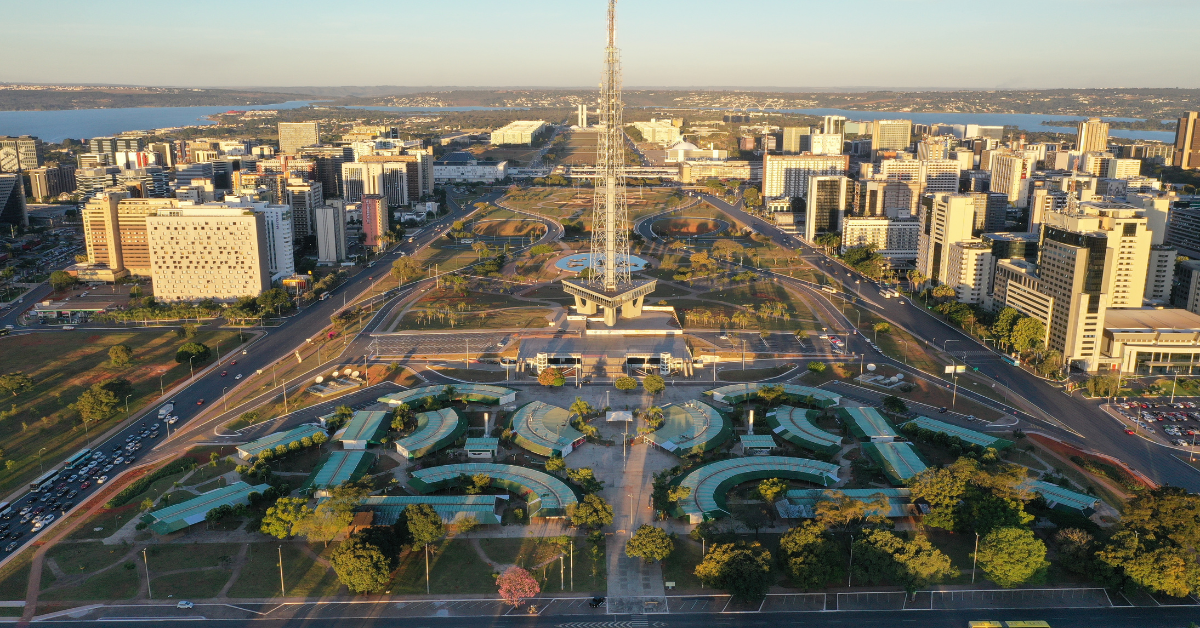Brasília, the capital of Brazil, has no common kanji representation in Japanese, unlike the country itself which is written as 伯剌西爾. This absence raises questions about how Japanese people perceive Brasília and why the city’s identity differs so greatly from Rio de Janeiro or São Paulo.
- Why Brasília Has No Kanji Representation
- Distinguishing Brazil and Brasília
- The Image Japanese People Have of Brasília
- Sports and Brasília
- Comparison with Rio de Janeiro and São Paulo
- The Psychological Distance Between Japanese People and Brasília
- Brasília Seen Through Culture and Architecture
- Sports and Cultural Exchange
- Conclusion
Why Brasília Has No Kanji Representation
Brasília is a new capital city built in 1960, unlike Rio de Janeiro or São Paulo, which have long histories. Because of this, it is considered a city that missed the opportunity to be assigned a kanji representation in Japanese.
While Brazil as a country was given the kanji “伯剌西爾” during the Meiji era and appeared in newspapers and documents, Brasília emerged much later as a modern city, long after the practice of coining kanji for foreign places had faded.
Thus, for Brasília, katakana is the most natural and widely used form in Japanese, and this has remained unchanged to the present day.
Distinguishing Brazil and Brasília
It is important not to confuse the two. Their differences can be summarized as follows:
| Item | Brazil | Brasília |
|---|---|---|
| Kanji representation | 伯剌西爾 | None |
| Period of establishment | Long history since colonial times | Built as capital in 1960 |
| Recognition in Japan | High (soccer, coffee, immigrants) | Low (mainly seen as political capital) |
| Image | Passion, nature, immigrants | Planned city, modern architecture, administration |
The Image Japanese People Have of Brasília
For Japanese people, Brasília is often perceived as a “futuristic city” or “political center.”
- Symbol of a planned city
Designed by Lúcio Costa and Oscar Niemeyer, its city plan resembles an airplane, and its architecture is registered as a UNESCO World Heritage Site. - A capital lacking a sense of reality
Unlike Rio de Janeiro or São Paulo, which have strong identities as tourist or commercial cities, Brasília is more distant and less familiar to the general Japanese public. - Political capital
Much like Kasumigaseki or Nagatachō in Japan, Brasília is primarily recognized as a place of administration and politics rather than culture or entertainment.
Sports and Brasília
Sports have become one of the main factors making Brasília more familiar to Japanese people.
During the 2014 FIFA World Cup, Brasília’s “Estádio Nacional Mané Garrincha” was one of the key venues, hosting matches including those of the Japanese national team. This event made the name Brasília strongly etched into the memory of Japanese soccer fans.
Furthermore, judo and volleyball are also popular sports. Judo, influenced by Japanese immigrants, is widely practiced in Brasília, with many dojos and international tournaments. This shows how sports have become a bridge for cultural exchange between Japan and Brasília.
Comparison with Rio de Janeiro and São Paulo
To understand Brasília better, it is useful to compare it with Brazil’s other major cities:
| City | Characteristics | Japanese perception |
|---|---|---|
| Rio de Janeiro | Rich in tourist attractions (Christ the Redeemer, Carnival) | A lively and passionate city |
| São Paulo | Economic hub with a large immigrant population | A city of Japanese immigrants, familiar and approachable |
| Brasília | Political capital, planned cityscape | Orderly and futuristic, yet distant |
This comparison highlights why Brasília often feels less approachable to Japanese people compared to other cities.
The Psychological Distance Between Japanese People and Brasília
There are three main reasons why Brasília feels distant to Japanese people:
- Limited tourist attractions compared to other cities
- Low media exposure in Japan, usually only political news
- Weaker ties with Japanese immigrants, who mostly settled in São Paulo and Paraná
At the same time, through sports and academic exchange, this psychological distance has begun to shrink. Especially soccer and judo are key elements that make Brasília more relatable to Japanese people.
Brasília Seen Through Culture and Architecture
Brasília is unique in that the entire city itself is regarded as a cultural asset.
- The city’s overall design resembles an airplane when viewed from above
- Iconic modernist buildings such as the National Congress and Cathedral by Oscar Niemeyer
- The city is registered as a UNESCO World Heritage Site
While it lacks flamboyant tourist spots, for students of architecture and urban planning, Brasília is a place of pilgrimage.
Sports and Cultural Exchange
The ties between Japan and Brasília can also be observed in sports and culture:
| Field | Features in Brasília | Connection to Japan |
|---|---|---|
| Soccer | Hosts World Cup matches | Japanese national team matches increased recognition |
| Judo | Strong due to influence of Japanese immigrants | International tournaments strengthen ties |
| Volleyball | Very popular nationwide | Encounters at the Olympics raise awareness |
| Architecture & Culture | UNESCO-recognized city planning | Japanese students of architecture often visit |
Conclusion
Brasília has no common kanji representation in Japanese and is naturally written in katakana. The reason is that it was built relatively recently and missed the period when foreign places were commonly given kanji names.
For Japanese people, Brasília stands in contrast to Brazil’s overall image of passion, soccer, and immigrants. Instead, it is mainly viewed as a planned political capital with modernist architecture.
Yet, through the 2014 World Cup, judo, and other sports, Brasília has gradually gained familiarity among Japanese people. In the future, sports, architecture, and cultural exchange may allow Brasília to be recognized as a more approachable and concrete city in the minds of Japanese people.






